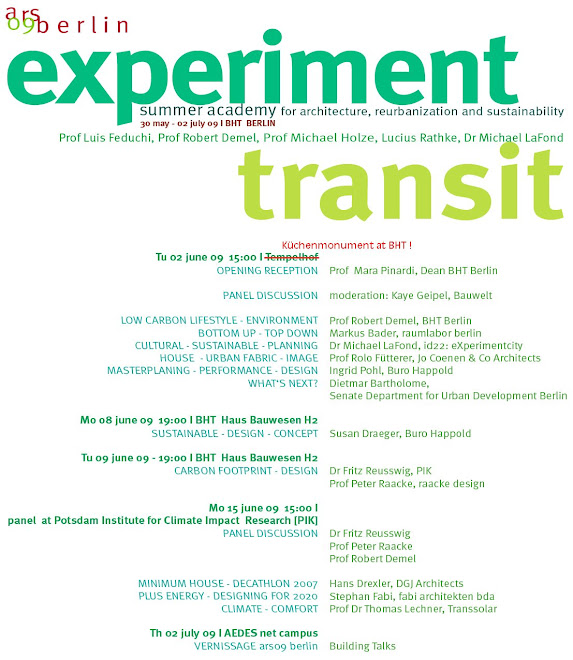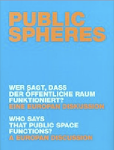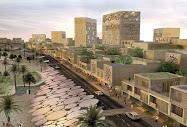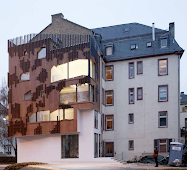planning participation: planning for 2100

missed chances?
id22 studies and supports cultures of sustainable urban development, emphasizing civil society, communication and culture.
Since 2003, id22 has been coordinating the experimentcity initiative, networking and publicizing creative, sustainable, self-organised reuses of vacant land and buildings.
Sustainable urban development reflects urgently needed responses to challenges and forces such as:
globalisation + global responsibility, demographic changes + immigration
climate change + environmental challenges, economic crisis + decreasing funding
A significant urban development principle is:
qualitative development is more important than qualitative growth
Significant urban development criteria are:
Participation, aesthetic + cultural diversity, social justice, ecology + health
A Sustainable Urban Development Strategy
needs a cultural foundation:
___________________________________________
economic | social | international | environmental
------------------------- C U L T U R E --------------------------
Cultures of sustainable urban development...
A process orientation which creatively involves local people strengthens identification and feelings of responsibility regarding local spaces and environments. This involvement mobilizes available resources and serves to increase local capacities. Local governments and academic institutions are important, but neighborhood and communuity structures also need to be addressed and stengthened.
...“local creative networks”
have impacts on forms of cooperation and call for innovative public-private-partnerships.
Government must allow for informal planning, while continuing its role in supporting culture
and maintaining urban infrastructures and services. Professionals including architects and artists - as well as activists need to aquire facilitation skills.
Civil society is both given the right and called on to assume more responsibility in designing, developing and managing local cultural activities and spaces.
No sustainable city without sustainable housing strategies:
Participatory, self-organized, creative, economical, ecological
Since the 1970s hundreds of such cooperative projects in Berlin. Three examples of sustainable housing projects in Berlin:
1. ufaFabrik, Berlin - Tempelhof
1979, occupation and re-development of abandoned UFA Film Center
Cooperative, residential mixed-use community,
Cultural, social, ecological, local projects and initiatives
Recognized by the UN Habitat Program as a best practice for improving the urban environment
www.ufafabrik.de2. Eco-Houses, Berlin - Tiergarten
1987, IBA Project
Cooperative, residential community, Social, ecological, aesthetic
www.wohnportal-berlin.de/oekohaus-corneliusstrasse3. Möckernkiez Initiative

Berlin - Kreuzberg
2009, planning initiative
Residential and mixed-use community,
Social, ecological, aesthetic
Involving cooperatives and Baugemeinschaften
www.moeckernkiez.deProposed Process for Tempelhof, Berlin 2009 - 2100, planning initiative
Qualitative developments
participatory, creative and culturally diverse affordable, socially and environmentally progressive
Process Orientation
Phase I
(approx. 5 years) temporary, experimental uses - pioneer fields and spaces created
involved in actions and exhibitions:
local neighborhood, district and city government, national and international initiatives, universities and schools, research and development, locally and internationally
Phase II
(approx. 5 - 10 years) further research and development, some permanent structures are built
based on Phase I results
establishment of sustainable research centers, in cooperation with local and international initiatives
Phase III
(approx. 10 - 80 years) building, research and development
based on Phase II results
Dr Michael LaFond
id22: Institute for Creative Sustainability
experimentcity - Marienburger Straße 40 10405 Berlin
info@experimentcity.net
e x p e r i m e n t c i t y
EXPERIMENTDAYS
WOHNPORTAL































